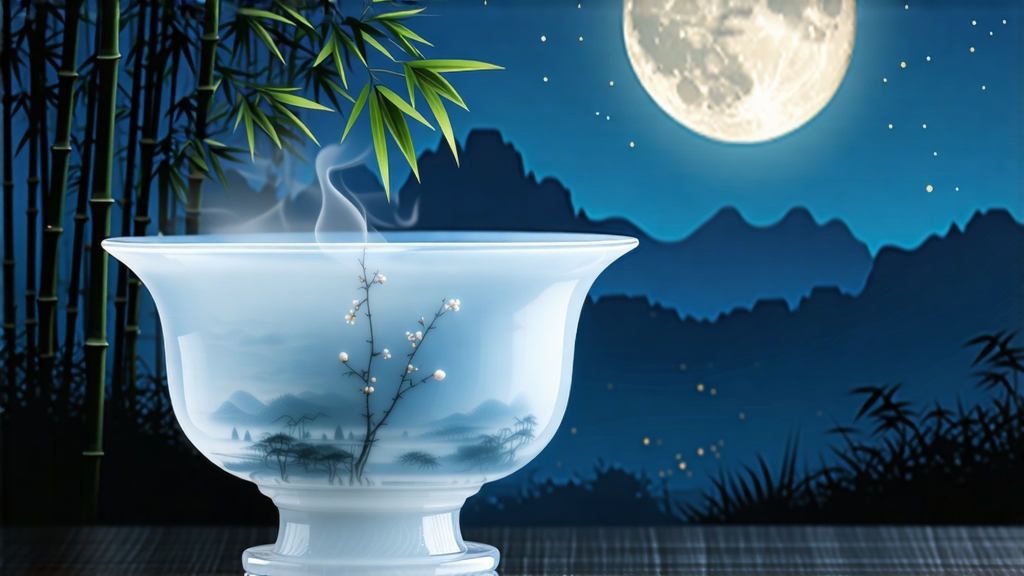
Bai Hao Yin Zhen—“Silver Needle” in the West, “White Hair Silver Tip” in its homeland—occupies the apex of China’s white-tea hierarchy. To understand it is to witness the moment when tea culture chooses restraint over rhetoric, when flavor is coaxed rather than compelled, and when a single leaf-bud distills the cool breath of a subtropical March night. This essay invites the international reader to travel, in mind and cup, to the narrow coastal strip of Fujian where the tea was first named, to follow its transformation from dormant bush to luminous liquor, and to learn why connoisseurs compare its aroma to mountain snow at sunrise.
-
Historical silhouette
White tea as a category enters written record during the Song dynasty (960-1279), yet Bai Hao Yin Zhen’s individual story crystallizes in the late eighteenth century around Taimu Mountain, Fuding County. Local chronicles credit a tea-master named Wei Zhen for selecting only the unopened leaf-bud, rejecting larger leaves that had been used for “white peony” cakes supplied to the northern courts. The new grade traveled along the same maritime corridors that carried Dehua porcelain; European merchants mistook the downy buds for silver filings, hence “Silver Needle.” By 1891 Fuding customs records list 1,300 chests of Yin Zhen exported through the treaty port of Fuzhou, fetching three times the price of black tea. After the 1911 revolution, civil unrest reduced output to a whisper; the 1960s state reclassification of white tea as “minor” further marginalized it. Revival began in 1984 when the Fuding White Tea Research Station released the improved “Dahaocha” cultivar; by 2022, protected-origin status and global wellness trends have pushed auction prices above two thousand US dollars per kilogram for pre-Qingming lots. -
Terroir and cultivar
Authentic Bai Hao Yin Zhen comes from only three townships—Diantou, Guan Yang, and Tai Mu—where red granitic soils meet a marine-influenced climate: winters mild enough to spare the tea shrub, yet spring nights cool enough to slow oxidation. Two cultivars dominate: Fuding Dahaocha, distinguished by an extra-large bud (2.5–3 cm) densely clad in trichomes, and the older Fuding White, whose smaller bud yields a more mineral cup. Gardens sit between 200–600 m on southeast-facing slopes that catch morning fog, reflecting light back onto the bushes and encouraging amino-acid accumulation. The same terroir produces excellent mandarin oranges; their blossoms share pollinators with tea, adding a subliminal citrus note to the finished leaf. -
The craft of “two suns and two breezes”
Unlike green tea’s quick kill-green or black tea’s rolling and full oxidation, white tea’s protocol is deceptively simple: pluck, wither, dry. Yet within that triad lies a choreography of micro-decisions that separates commodity from collectible.
a. Plucking: buds must be taken within ninety-six hours of the Qingming festival, before the first scale leaf unfurls. Pickers use bamboo baskets lined with banana leaf to prevent compression; any bruise will later rust into an unsightly red tip.
b. Outdoor withering: buds are laid 1 cm thick on water-reed trays and placed under a March sun angled at 30–40°. Ambient humidity is 65–70 %; leaf temperature must not exceed 28 °C. Every twenty minutes the trays are rotated 180° to equalize exposure. During this “first sun” moisture drops from 74 % to 58 %.
c. Indoor withering: trays move to a pine-ventilated loft for 36–48 h. Here the magic of non-enzymatic oxidation occurs: chlorophyll degrades into pheophytin, catechins dimerize, and a hay-like aroma drifts toward honey. Masters gauge progress by ear—rubbing a bud should produce the faint squeak of a fresh snow pea.
d. Low-temperature drying: traditional charcoal baskets hold the buds 8 cm above embers at 40–45 °C for 90 min, stopping oxidation at roughly 5–8 %. Modern facilities use dehumidified ovens, yet many exporters still finish 20